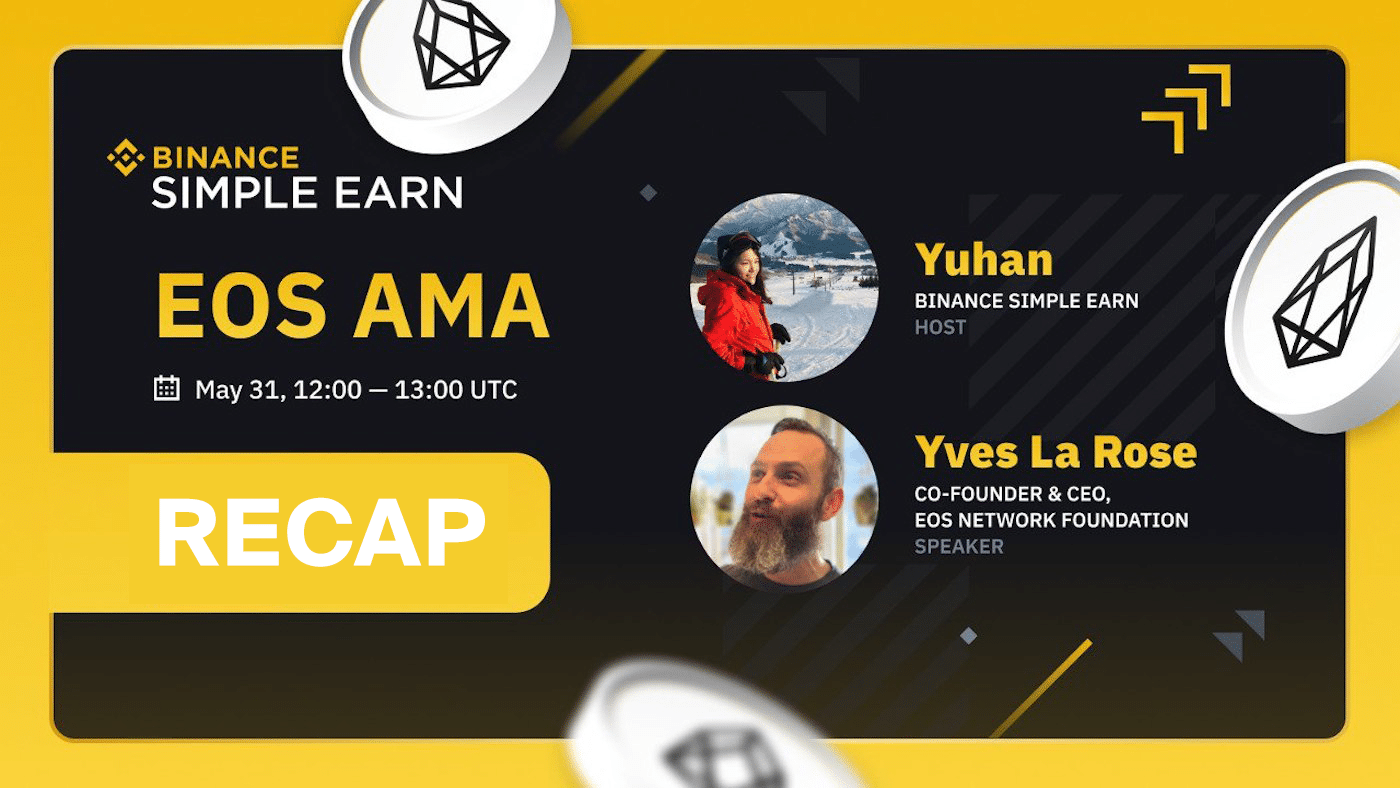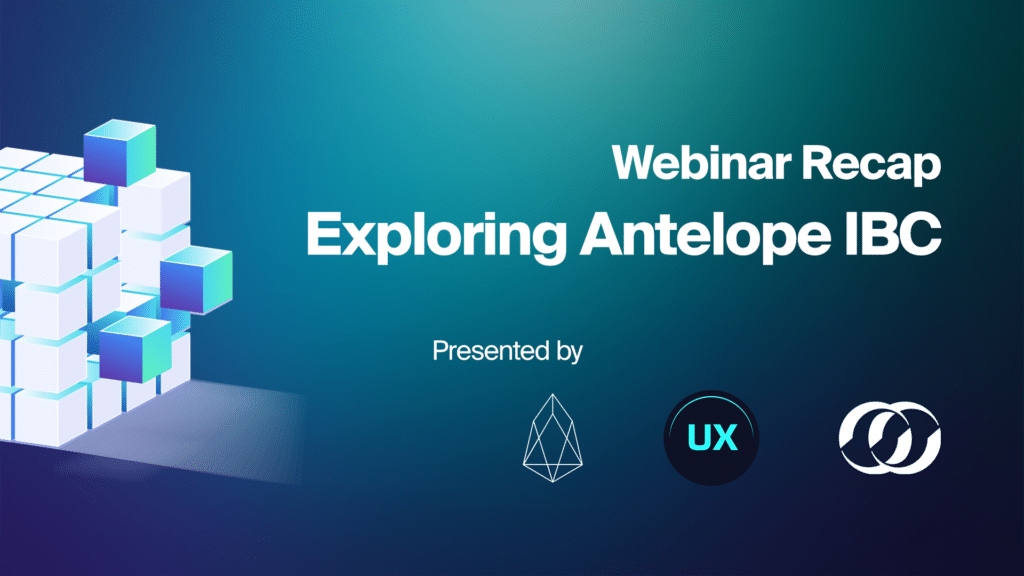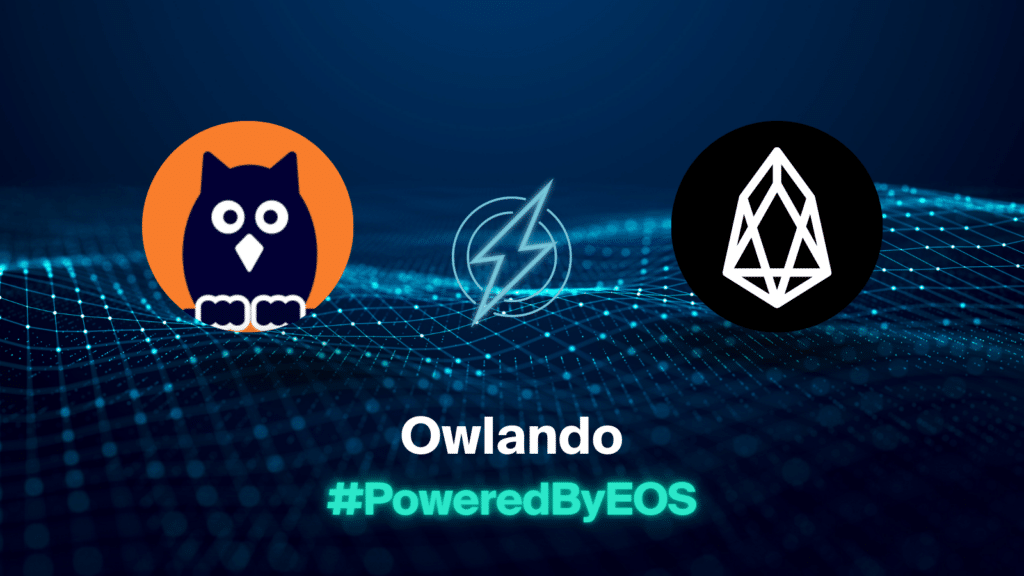Last week, ENF CEO, Yves La Rose, attended an AMA with the Binance community to give updates on the latest news from within the ecosystem and drop some hints on what’s to come. The event was well attended with over 9,000 views in the Binance portal on the first day alone. This event comes during an ongoing Binance Simple Earn campaign, where eligible participants can share in an 80,000 EOS reward pool for learning about EOS and taking part in a quiz.
The topics discussed during this event covered a wide range of ecosystem efforts including the launch of EOS EVM v0.5.0-rc1, Yield+, Recover+, regulatory efforts, updates on legal efforts, community engagement initiatives and more. Check out the video below for the full replay or keep reading for a TL;DR of what was discussed.
Getting to know Yves La Rose, the ENF, and the key strengths of DPoS
To start things off, La Rose gave some background on his work in the industry, entering the space around 10 years ago with an interest in Bitcoin mining and later diving in full time with the launch of the EOS Blockchain. He provided insight into the origin of the EOS Network Foundation and its formation in August 2021, with the purpose to serve as a central body that could be a voice for the network and work to grow the ecosystem in a way had been lacking up until this point. La Rose shared that since launching the ENF, the network has seen a resurgence of growth and interest contributors around the world.
Members of the Binance community were curious about what makes EOS’ underlying consensus mechanism, Delegated Proof of Stake (DPoS) so powerful. Yves shared how it is similar to Proof of Stake, in that the amount of stake you hold gives you certain advantages, but that you are able to delegate that stake to another entity. This abstracts the governance from other token utilities, allowing token holders to vote for network validators, while still being able to use their tokens in other ways. Another benefit of this consensus mechanism is that it is less taxing on the infrastructure, enabling greater throughput, energy efficiency and performance.
Major ecosystem milestones and key achievements since the launch of EOS EVM
When asked about some of the most notable milestones in recent months, La Rose drew attention to the launch of the EOS EVM on April 14, 2023. This was a massive achievement for the entire EOS community, opening the door to developers building in traditional Solidity environments and giving them access to similar high performance that is experienced on EOS native.
It was noted how critical it was that the EOS EVM have full RPC compatibility on launch, meaning that it should be just as easy as any other EVM environment for developers to launch a dApp. This has resulted in an inflow of developers and projects launching on the EVM, with 12 new applications launching in the first week alone. If a project has already launched a dApp on another network, the barrier to entry is extremely low. With more projects going multichain, it’s expected that this influx of applications launching on EOS will continue to grow at an exponential rate.
The EOS engineers have already released the first upgrade for EOS EVM only 6 weeks after launch, which enabled new functionality, such as Yield+. La Rose also hinted that the official EOS EVM roadmap will be released shortly. This will give the community an idea of what functions are being added onto the EVM, which EIPs (Ethereum Improvement Proposals) are being integrated and where the team is taking the lead on new innovations.
Moving on to other news, La Rose shared that there are lots of exciting developments coming out of the Hong Kong market. He is currently in the process of applying to residency there, in order to be able to work more within the local industry. There is also already a team of EOS ecosystem contributors situated in Hong Kong and actively working from that location. Yves also hinted at another regulatory body that the ENF has been working with to make EOS available in a location that it has been previously unavailable.
On the topic of regulations, Yves later reiterated the importance of Hong Kong and Asia in general, with Yves making several trips to that area of the world, meeting with government officials, businesses and other potential partners. Last year, the ENF Worked closely with the South Korean market, particularly Busan, through a strategic MoU (Memorandum of Understanding). Recognizing that the landscape can shift quickly with regulations, La Rose noted that it’s important to take part in what he calls “regulatory arbitrage”. One door may close due to constraints that are out of the control of the ENF, but another opens and the team must rapidly respond accordingly. At the same time, part of the ENF’s strategy is to work with governments in jurisdictions that are committed to growing adoption over time.
Finally, La Rose touched on the ongoing legal efforts in relation to the previous maintainers of the network, B1. There is currently one class action lawsuit open, but another class action is opening up that can have a further impact in this area. He noted that names are currently being collected to be a part of this effort. If anyone entered the ecosystem up until around September of 2021 because of the representation from B1 and believes that their tokens have less utility than what they would have had if B1 lived up to their commitments, please email [email protected]. The team working on this has already collected hundreds of names and are continuing to expand the list on a regular basis.
Insight into EOS Tokenomics and how Recover+ is ushering in a new era of DeFi adoption
During a discussion on tokenomics, La Rose explained that the EOS EVM was launched as a publicly funded project, with development, RPC nodes, and all other functions funded by the network. The underlying gas token for the EVM is EOS, which pays for the network resources that power transactions. Any EOS used to pay for these transactions is locked up, to be burned in the future. The idea with this is that the more the EVM is used, the more EOS is taken out of circulation.
He noted that the EVM has already removed just as much EOS as other network functions such as the EOS Resource Exchange (REX), which drives value only to token holders that are staking their EOS. On the other hand, the EOS EVM locking up EOS to be burned is a direct benefit to all token holders.
La Rose also provided some insight into the Recover+ program and the impact this will have when it comes to lowering the barrier to entry to DeFi for lay users. EOS has a permission system that gives block producers the capacity to intervene in the event of a substantial exploit. There have been several instances in the past when block producers believed that they had enough information to be able to step in and intervene, when an exploit was taking place.
From these experiences, a decision was made to have a proper portal instituted, so that when another exploit takes place the working group is able to field as much information as possible, enabling intervention as quickly as possible. And so, Recover+ was built as a B2B initiative where dApps submit information ahead of time to opt-into the program. Then, if something happens, all of the information is available to make the appropriate decisions.
On several occasions in the past, token holders have been able to be made whole thanks to the rapid response of this function. It plays into a key motto of the ENF, which is blockchain made easy. The goal is to make it simple for users from a Web2 environment to take advantage of DeFi dApps without the same risk of a loss of funds that are present in other ecosystems.
An overview of successful dApps on EOS
When asked about successful dApps that have already launched on EOS, Yves noted that Yield+ may not be a dApp but is an important initiative that benefits many DeFi dApps on the network. The program delegates a certain amount of tokens to applications that meet criteria such as a specific TVL, contract audit, etc. This opens up the application to receive tokens from the network that can be redistributed to users interacting with their application.
One of the biggest dApps taking advantage of this is called Defibox. Not only do token holders adding liquidity receive a yield of EOS from the network, the Defibox application is able to distribute additional tokens, providing ~6-7% Yield on tokens that are staked.
Upland is a slightly different type of application: a metaverse platform that is in the top 10 for gaming in Web3. The application has been able to take advantage of unique EOS features to extract the more complex blockchain features away from the user. This way, a user can interact with the game, without realizing they are utilizing a Web3 application.
WordProof is another notable dApp that creates trust online by timestamping content to the EOS blockchain. By enabling this through features like a Yoast integration, tons of content is currently being timestamped everyday, without the publisher needing to learn about the blockchain elements. This stores more content to the EOS network, resulting in more utility for the token holders. Wordproof also recently integrated Shopify, so that with a very simple in-app toggle, merchants begin using this platform to timestamp to the EOS blockchain.
How the EOS Network handles upgrades without hardforks or impacting the user experience
When the topic of network upgrades was brought up, La Rose gave some background on the launch of EOS and shared that when it launched a goal of its design was to be able to perform software upgrades, without needing to hardfork the way that traditional networks do. Instead, EOS has upgraded on several occasions in a softfork fashion, meaning that infrastructure providers are able to upgrade the software at their own pace.
There have also been situations of hardforks, where everyone needs to upgrade at the same time. However, in this case it is just the software being updated and the average end user is never aware that any of this is going on. Nothing changes on their end and they are not required to take any action.
For infrastructure providers, network hardforks are not easy to pull off, but because it is an inherent function to EOS, ecosystem leaders have become extremely used to executing this type of initiative. There are a number of systems in place to ensure efficient communication and engagement from all parties, while abstracting the end user from it. This again plays into the ENFs motto of blockchain made easy and is a critical piece to the strategy for mass adoption.
Discussing the structure and model of EOS Network Ventures
The EOS Network Foundation (ENF) is a nonprofit working to grow the EOS ecosystem. One of the key missions when it launched was to address the lack of a centralized coordination mechanism, but doing so in a very decentralized way. So the ENF’s mandate has an emphasis on code development, public goods funding and other ways of enabling growth as a non-profit.
The network, however, is still missing more traditional, for-profit mechanisms. This is where EOS Network Ventures (ENV) comes into play. ENV is there to support those who have gone through the non-profit support systems and require additional support in the way that a traditional venture arm would be able to engage.
The ENV has a treasury of 68 million EOS tokens, which serve as the main Liquidity Provider (LP), alongside other industry LPs that will also contribute to this ecosystem fund. The ENV’s goal is to drive value back to the LPs through strategic investments. Because of how the ENV will be set up, the network will be one of the biggest LPs, driving value back to the token holders. The mechanism is separate from the ENF and still in its infancy but the team overseeing this initiative have begun mapping out a process to make investments in smaller projects and incubate plus invest in larger projects.
The ENV has also begun the process of lining up partners, DWF Labs being the first, with a commitment of $50M to be invested into the ecosystem. Prior to the ENV there was not an avenue for outside capital of this type to flow into the ecosystem in an efficient and strategic manner.
Born from the community to exemplify the power of Web3
La Rose closed the discussion by noting that the foundation was born out of the EOS community, which is very important as it’s where the network gains its strength. The ENF has helped to facilitate a resurgence of growth across EOS and bring developers back to the ecosystem. This history proves what Web3 is all about, tokenholders and the community taking back control from larger corporations and steering technology in a way that represents their values.
This link to the community remains strong to this day, with EOS Fireside Chats being hosted on the EOS Community Discord every Wednesday at 3pm ET. These events often see over 60 participants in attendance, who are able to ask questions directly to ecosystem leaders. Other important initiatives to give back to the community include the ENF Grant Framework and the Pomelo.io community funding protocol, which just entered its 6 season, featuring over $158,000 in matching funds for projects building public goods on EOS.
These are just a few of the many ways that the ENF supports the community as it pushes the boundaries of what is possible in Web3. “EOS is back”, Yves La Rose exclaimed excitedly, encouraging those in the audience to explore avenues to get involved in the ever expanding ecosystem.
EOS Network
The EOS Network is a 3rd generation blockchain platform powered by the EOS VM, a low-latency, highly performant, and extensible WebAssembly engine for deterministic execution of near feeless transactions; purpose-built for enabling optimal Web3 user and developer experiences. EOS is the flagship blockchain and financial center of the Antelope framework, serving as the driving force behind multi-chain collaboration and public goods funding for tools and infrastructure through the EOS Network Foundation (ENF).
EOS EVM
The EOS EVM is an emulation of the Ethereum EVM, housed within an EOS smart contract. It offers feature parity to other EVMs in the space but with unmatched speed, performance and compatibility. EOS EVM connects the EOS ecosystem to the Ethereum ecosystem by allowing developers to deploy a wide array of Solidity-based digital assets and innovative dApps on EOS. Developers can use EOS EVM to take advantage of Ethereum’s battle-tested open source code, tooling, libraries and SDKs, while leveraging the superior performance of EOS.
EOS Network Foundation
The EOS Network Foundation (ENF) was forged through a vision for a prosperous and decentralized future. Through our key stakeholder engagement, community programs, ecosystem funding, and support of an open technology ecosystem, the ENF is transforming Web3. Founded in 2021, the ENF is the hub for EOS Network, a leading open source platform with a suite of stable frameworks, tools, and libraries for blockchain deployments. Together, we are bringing innovations that our community builds and are committed to a stronger future for all.



